Corpus Christi (Jesuits) Boscombe
757 Christchurch Road
Boscombe
Bournemouth
Dorset
BH7 6AN
Tel: 01202 425286
http://corpuschristiboscombe.org.uk/
Each Sunday 11.00 Sung Latin Mass (with readings and sermon in English)
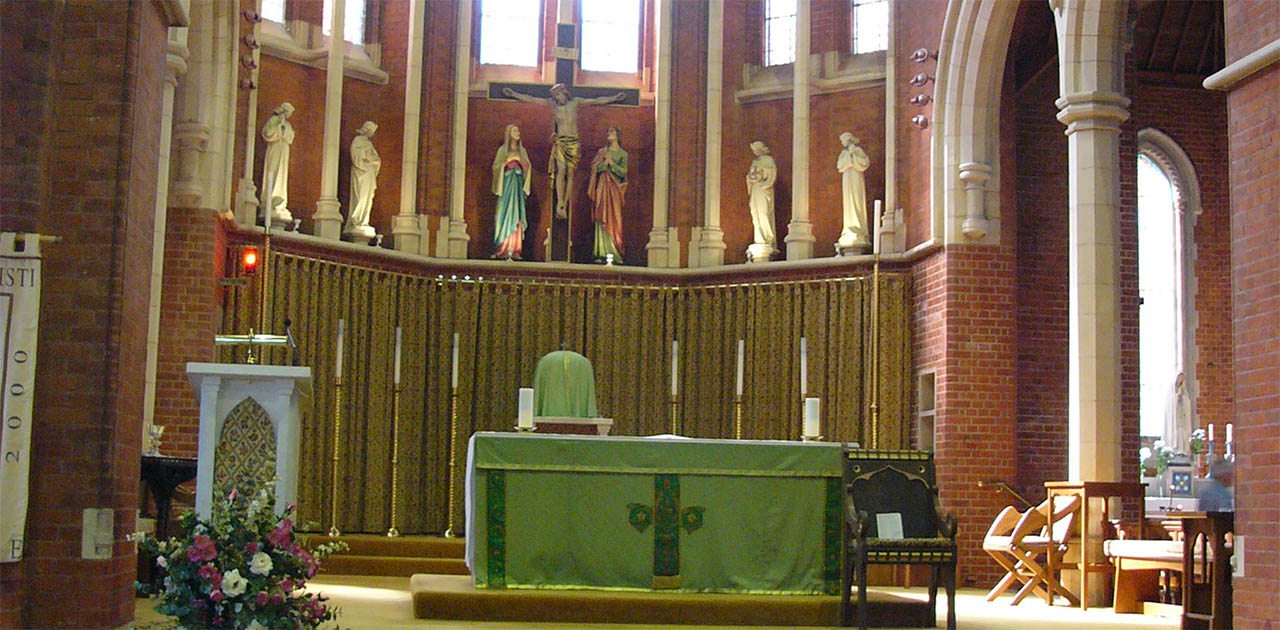
Auxilia ad Missam in forma ordinaria celebrandam secundum Œcumenicum Concilium Vaticanum II
Corpus Christi (Jesuits) Boscombe
757 Christchurch Road
Boscombe
Bournemouth
Dorset
BH7 6AN
Tel: 01202 425286
http://corpuschristiboscombe.org.uk/
Each Sunday 11.00 Sung Latin Mass (with readings and sermon in English)

St. Edward on the Lake
6945 Lakeshore Rd., Lakeport, MI 48059
(810) 385-4340
https://stedwardonthelake.org/
Holy Mass is celebrated ad orientem on Tuesdays and Fridays at 8:00am and the first weekend of every month.
I began the practice of saying the Mass ad orientem Advent 2017. Cardinal Robert Sarah, the prefect of the Congregation for Divine Worship and Discipline of the Sacraments (i.e., the Vatican’s liturgy chief), asked priests to begin celebrating Mass ad orientem saying among other things that “the Sacred Liturgy has become too anthropocentric; man not Almighty God has often become its focus …we must take care to form our people that God, not ourselves, is the focus of our worship”. At a conference on the liturgy a couple of years ago, Cardinal Sarah (who was appointed by Pope Francis in 2014) said, “I ask you to implement this practice [of ad orientem worship] wherever possible,” and told pastors to have “confidence that this is something good for the Church, something good for our people”. He had suggested Advent as a good time to begin because it is the time when we wait eagerly for the Lord who will come without delay. So, it’s been over a year since this has been our practice here at St. Edward. I like to think that it has had a positive impact on us as a parish. I know for myself as a priest offering the Mass, I find it so edifying and prayerful. It’s amazing how different it is when I turn back the other way. Mass ad orientem is like having an intimate conversation with the Lord. Turning to Him and opening myself to Him, I am better able to make an interior effort to unite myself to the sacred action that is taking place on the altar (which is what we should all be striving to do at every Mass). I’ve also heard from so many of you about how it has enriched you. As a pastor, there’s nothing better to hear than that! Especially since it is God Himself who has enriched you. I received a couple dozen copies of letters written by you to the Archbishop stating your appreciation of the ad orientem worship. Thank you for your support.
Read the whole article by Fr. Lee Acervo here.
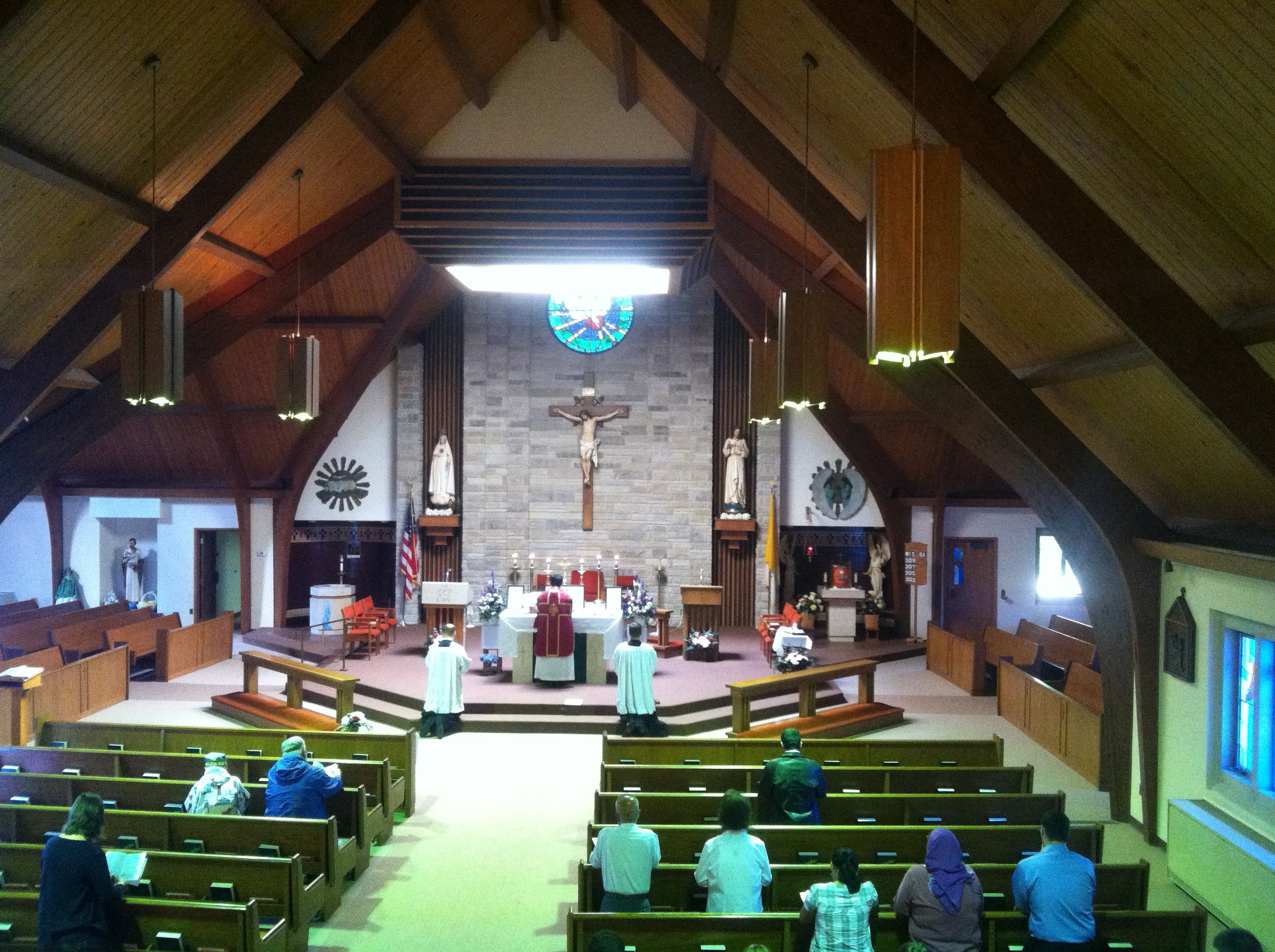
The Church of the London Oratory, or what is more properly the Church of the Immaculate Heart of Mary in South Kensington in London, is notable as a gem of sacred architecture, sacred art, sacred music and sacred liturgy.
Read the full report by Shawn Tribeon on the Liturgical Arts Journal website.
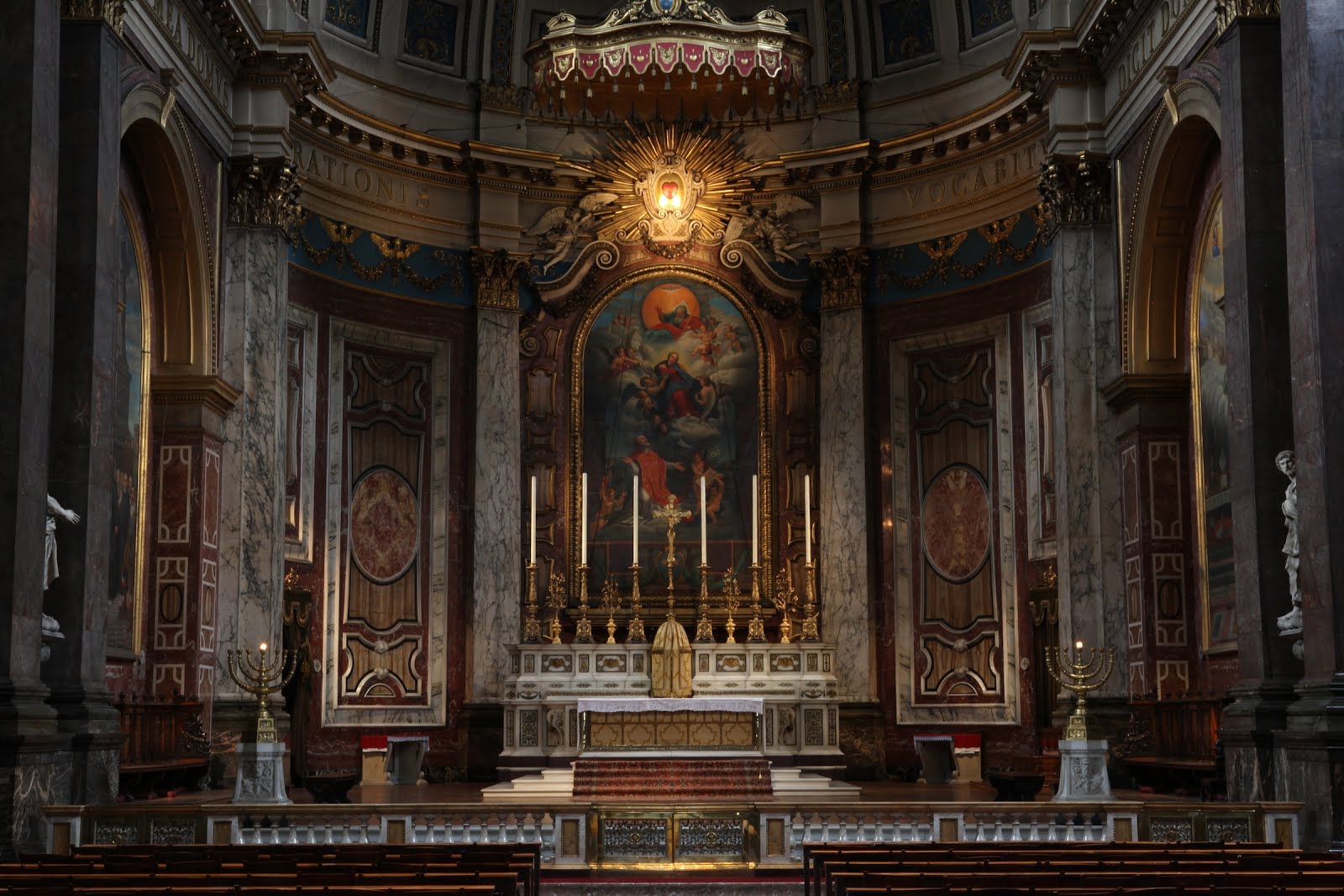
Heilige Messe in St. Peter:
Holy Mass at St. Peter:
Santa Messa a S. Pietro:
Sonn- und Feiertage/Sunday and Feastdays/Domenica e giorni festivi: 11:15 (Latein/Latin/Latino – Musik/Music/Musica)
Petersplatz
1010 Wien
U1/U3-Haltestelle Stephansplatz
Messbuch Latein/Deutsch: http://www.peterskirche.at/messbuch/
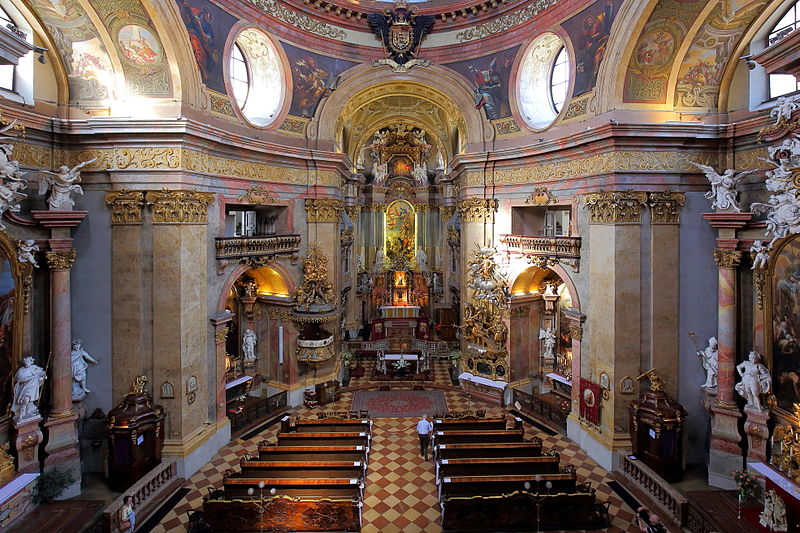
Sacred Music at Old St. Mary’s
At Old Saint Mary’s, the sacred music apostolate seeks to combine the rich heritage of Catholic music from the medieval, renaissance, baroque, classical, and romantic periods of music in the more “modern” context of the Mass of Paul VI. Below, you will find musical descriptions of the parish’s Masses.
9:15 a.m. Latin Mass
At this Mass, one can experience music almost entirely in Latin. The Oratory Schola Cantorum chants the propers of the Mass (Introit, Gradual, Alleluia, Offertory, and Communion) from the Graduale Romanum, the official music book of the Roman Catholic Church. The congregation joins the choir in the singing of the Ordinary of the Mass (Kyrie, Gloria, Creed, Sanctus, and Agnus Dei) using one of the chant settings of the Kyriale Romanum. These chant Mass settings change seasonally, as directed by the Church’s rubrics.
Twice per month and on special feasts of the Church year, the Ordinary is sung to a setting by a major composer of the renaissance, baroque, or romantic periods. All Sundays and feasts also include motets or special anthems, sung by The Oratory Schola Cantorum.
Organ music at the prelude, improvisations during the Mass, and the postlude are provided weekly (except during Advent and Lent).
11:00 a.m. German Mass
At this Mass, one can experience music entirely in German. Old Saint Mary’s has maintained the tradition, albeit in a modern adaptation, of the Deutsche Singmesse, or German Sung Mass.
Hymns from the German-speaking hymnal, the Gotteslob (2013), are sung by the congregation at the procession, Kyrie, Gloria, Gospel, Offertory, Sanctus, Agnus Dei, Communion, and retiring procession.
Organ music at the prelude, improvisations during the Mass, and the postlude are provided weekly (except during Advent and Lent).
12:30 p.m. English Mass
At this Mass, you can experience a blend of music in Latin and English. Congregational hymns are sung at the procession and retiring procession. The congregation also sings parts of the Ordinary of the Mass (Sanctus, and Agnus Dei) in Latin using Pope Paul VI’s Iubilate Deo setting promulgated following the Second Vatican Council.
Organ music, in the form of improvisation, is played during the Offertory and Communion. These improvisations are based on the chants of the day.
3:30 p.m. Sunday Vespers
The culmination of Sunday prayer is with the Church’s daily evening prayer, called Vespers. Each Sunday (mid-October through the last Sunday in May), the members of The Cincinnati Oratory, along with all those who wish to attend, chant second Vespers of Sunday according to the Liber Usualis 1962.
This service of evening prayer is sung entirely in Latin. There are Latin-English editions of the chants at each of the entrances of the church for the faithful to follow along.
Sunday Vespers is a wonderful way to “keep holy the Sabbath,” as the Lord commands.
We hope you will join us and sing heartily!
Old St. Mary’s Church
123 E. Thirteenth St.
Cincinnati, Ohio 45202
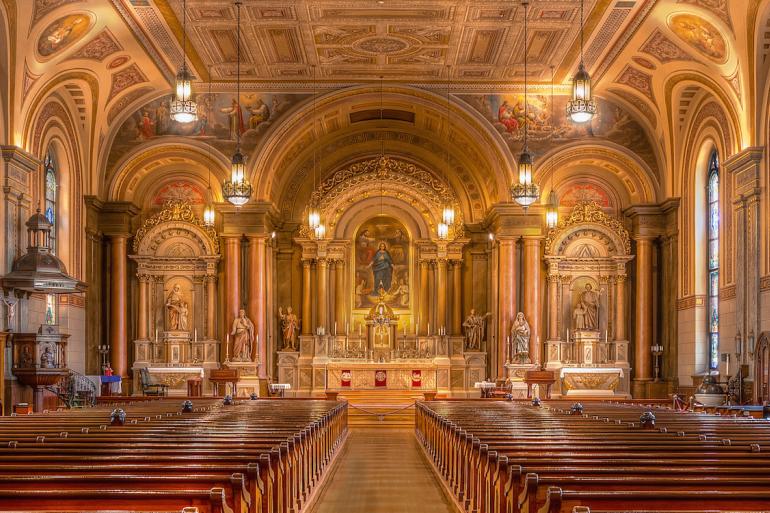
The Novus Ordo Latin Mass – part I
The Novus Ordo Latin Mass – part II
Del blog Infocatólica:
Estando en la parroquia de la Beata Mogas, en Tres Olivos, en Madrid, teníamos la costumbre de celebrar la primera misa del domingo “ad orientem”. En su momento expliqué en el blog el sentido de celebrar así y, posteriormente, ofrecí una crónica de lo que fue la primera misa “ad orientem” en la parroquia.
En la iglesia parroquial de Braojos tenemos unos retablos en el transepto de esos que realmente quitan el hipo. Destaco en el lado del evangelio el que alberga a la Virgen del Rosario, barroco, de mediados del XVII, y en el lado de la epístola el grandioso retablo barroco obra de Gregorio Fernández y completado con pinturas de Vicente Carducho. Evidentemente, dos retablos con sus altares adosados.
Por supuesto que, en estos retablos, la celebración de la misa tiene que ser necesariamente ad orientem. Miedo me daba de que la gente se sintiera incómoda en la celebración, ya que son cincuenta años de ver celebrar al sacerdote coram populo. Por eso al acabar la misa pregunté por la experiencia. Las pocas personas estaban no digo encantadas, sino emocionadas. Tanto, que la vigilia de la adoración nocturna la hicimos así.
Hoy no se pueden hacer retablos así, pero allí donde los tenemos, no pueden quedar reducidos a mero objeto decorativo. Resulta triste que, altares con su ara, donde se celebró la misa tantas veces, hoy queden reducidos a meros soportes para una maceta o dos candelabros que no sabemos qué hacer con ellos.
Podría contar muchas cosas. Me limito a expresar el gozo que supone celebrar la misa contemplando el cielo frente a ti.
Es como si a la celebración de la Eucaristía se asomase el cielo para contemplar el misterio de la fe. Qué impresión elevar la hostia y el cáliz a la vez que contemplas a los ángeles que rodean a María y se alegran en el cielo.Seguiremos celebrando en esos altares de cuando en cuando. Ya lo creo que sí.
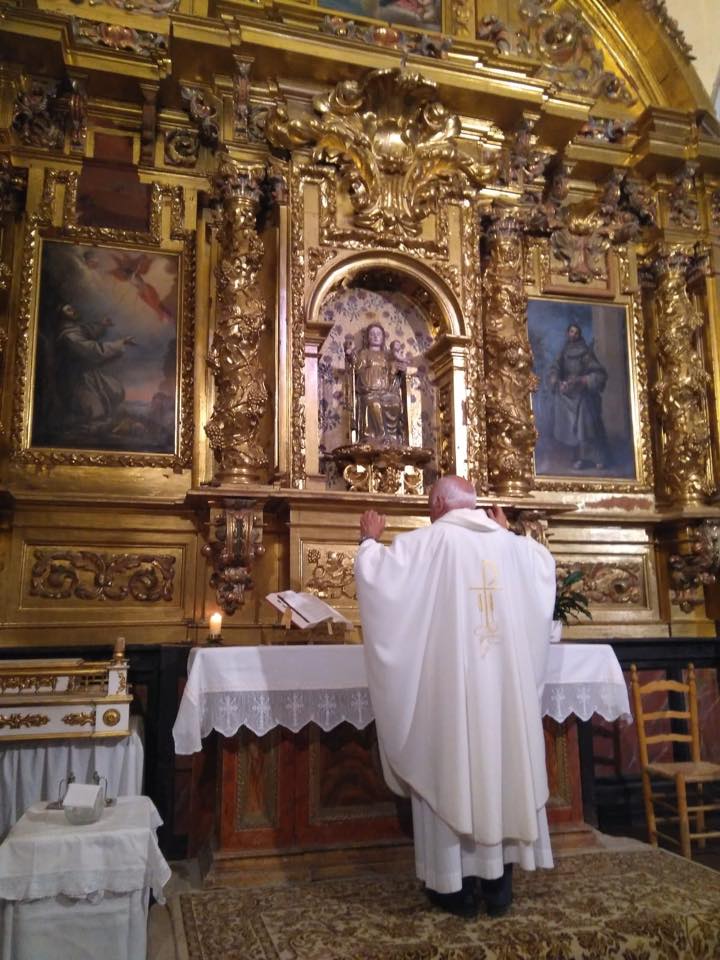
Artículo completo aquí.
From New Liturgical Movement site:
We recently reported on a very nice restoration project at the Basilica of Ss Peter and Paul in Chattanooga, Tennessee, in the diocese of Knoxville, in which three new altars were installed, along with a new reredos for the main sanctuary, and a good deal of carpeting removed from the church’s original hard pine flooring. A final stage of the project has now been completed, with installation of a new tabernacle in the main sanctuary, and the return of the altar rail around it. Fr J. David Carter, the pastor and rector of the basilica, wrote to his parishioners that the altar rail is being used as a way of encouraging people to kneel for the reception of Holy Communion, in the hopes that it will serve to foster belief in and greater reverence for the True Presence of Our Lord in the Blessed Sacrament – feliciter!
Latin Novus Ordo Masses:
11:30 am Sun. – Sung Novus Ordo Mass in English & Latin with schola, incense, ad orientem
1:30 pm Sun. – Sung Novus Ordo Misa en Español & Latín with choir, incense, ad orientem seasonally
The Basilica of Sts. Peter & Paul
214 E. 8th Street, Chattanooga Tennessee
423 266 1618
Website
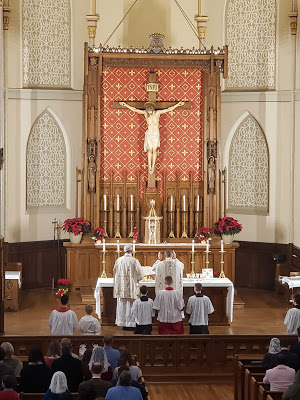
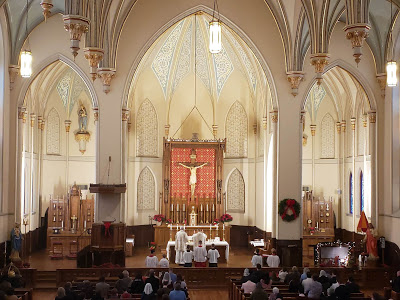
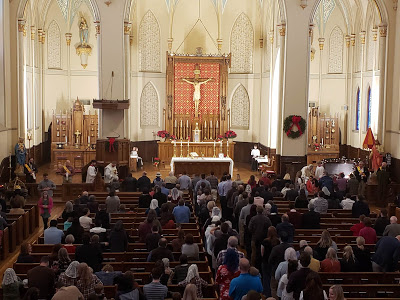
CHRISTMAS DAY – Tuesday, 25th December
8:00am MASS of the DAWN (Latin)
Every Sunday at 8:00am the Novus Ordo Mass is celebrated in Latin.
St. Thomas’s Church, 14 Granville Road, Sevenoaks TN13 1ER
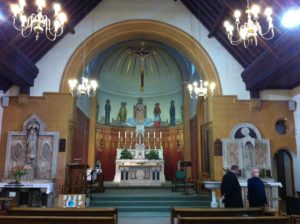
From the Association for Latin Liturgy website:
Entries are arranged in alphabetical order of English counties, but with the Greater London section placed at the beginning; Scotland and Ireland are at the end. We include all churches which we have been informed use Latin in the current Ordinary Form of the Mass.
The Directory may be viewed here or downloaded here.
The accuracy of the Directory depends upon reports by users. Please send these to enquiries@latin-liturgy.org
From a young reader of the Sunday Bulletin of The Church of the Epiphany, 1900 111th Ave NW – Coon Rapids, MN 55433
Hi, my name is ___, a freshman at [a local public] High School. Earlier this year I was extremely blest to attend the Steubenville Youth Conference with Epiphany. We learned and did a lot. I have to say, one thing really stood out to me was on the last day when we stopped at The Shrine of Our Lady of Guadalupe in La Crosse, Wisconsin. At the shrine they celebrated Mass ad orientem. It was something that really struck me; it brought up a lot of questions and also changed the focus of the Mass. Ad orientem Mass is a way of celebrating Mass where the priest faces the East rather than the people. Ad orientem comes from the Latin word, oriens, which means “the rising sun.” Jesus himself was the rising sun. He brings about all new things and life itself, just as the sun brings life to us. Celebrating the Mass ad orientem was almost universal before Vatican II. Vatican II did not call for ad orientem to stop all together, but aimed to bring the people closer to celebrate the Mass. But celebrating the Mass ad orientem truly does change the focus of the Mass. It takes the focus off the priest and puts it on the celebration of Jesus’ life, death, and resurrection. It is different than how we would usually celebrate Mass today. So, it brings about a different way of thinking and understanding the origins of the Mass and the way it was traditionally celebrated. Celebrating the Mass ad orientem also hits the younger generations. When we stopped at the Shrine on our way home, the Mass seemed different. The group all seemed involved with the Mass and a lot less distracted than we usually were (which interested me because we had a pretty talkative group). During the whole Mass it felt different. I was focused, not the usual for my wandering mind; it focused my thoughts on the Body, Blood, Soul, and Divinity of our Lord Jesus. I think celebrating the Mass ad orientem at Epiphany would be a good addition because of the way it brings people into the celebration of the Mass. While it will be different and would need some explaining, it would be a great addition to the parish and its Masses. Ad orientem is a way to bring the congregations focus closer on Jesus himself truly in the Eucharist at Mass.